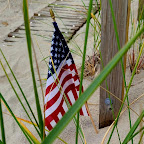Today, a friend and I spent the day at the beach, reminiscing and catching up. Our conversation drifted back to our childhoods and teen years, and we were surprised by how many shared memories we had of growing up at the New Jersey beaches.
I spent my summers at Takanassee Beach Club in Long Branch, while she went to Sands in Sea Bright. Back then neither place was anything fancy. Even though we belonged to different beach clubs, we realized that you don’t need a specific spot to feel connected to those memories.
Here are some of the things we laughed about. Chances are if you grew up on the NJ beaches or went to a public pool and are of a certain age, you'll have similar memories!
Bathing Caps
- Wearing a bathing cap in the pool was mandatory. They had chin straps that snapped at the jaw and they had this weird rubbery smell.
- Our moms wore them too—but theirs were decorated with big, colorful flowers.
- As we got older, we graduated to racer caps. They were definitely cooler.
The Snack Bar
- The snack bar was the heart of the club. I can still smell those burgers and hotdogs. Fries, ice cream cones, paper-wrapped push-up pops, frozen Milky Ways—it was all there.
- Once you were older, you hung out there with friends, played cards, or just waited out rainy days.
- The floor was like a boardwalk, and if you dropped your change, it was gone for good—straight through the cracks. Little kids would crawl underneath to collect coins and buy ice cream.
- When it rained, everyone huddled under the snack bar awning. It was the place to be.
The Hangout Area
- As teens, we drifted away from our parents and stuck with our friend group. We only circled back when we needed snack bar money.
- Our parents didn’t worry about us much—every now and then they’d look up to check, but mostly, they let us be.
- The locker areas became unofficial hangouts too.
The Pool
- Mornings meant swim lessons in icy water. It was miserable—but we learned to swim.
- During adult swim, all the kids sat impatiently at the edge, waiting for the whistle so we could dive back in.
The Ocean
- We both had blow-up canvas rafts to ride the waves. Hers was blue and yellow and mine was blue and red.
- There were roped-off areas for swimming. I used to sit on the rope and do backflips into the water, dodging clumps of green seaweed.
- As little kids, we stayed in the water so long our lips turned blue—and we didn’t even care.
Biking to the Beach
- Once we got older, we rode our bikes to the beach on our own.
- Every so often, I’d get a ride home on someone’s handlebars—usually a crush. It was terribly uncomfortable, but I never complained.
Whether you grew up
going to a beach club, a public beach, or your local pool, these kinds of
memories stay with you. They remind us of the freedom of childhood summers—and
how much we all really have in common.
.jpg)



